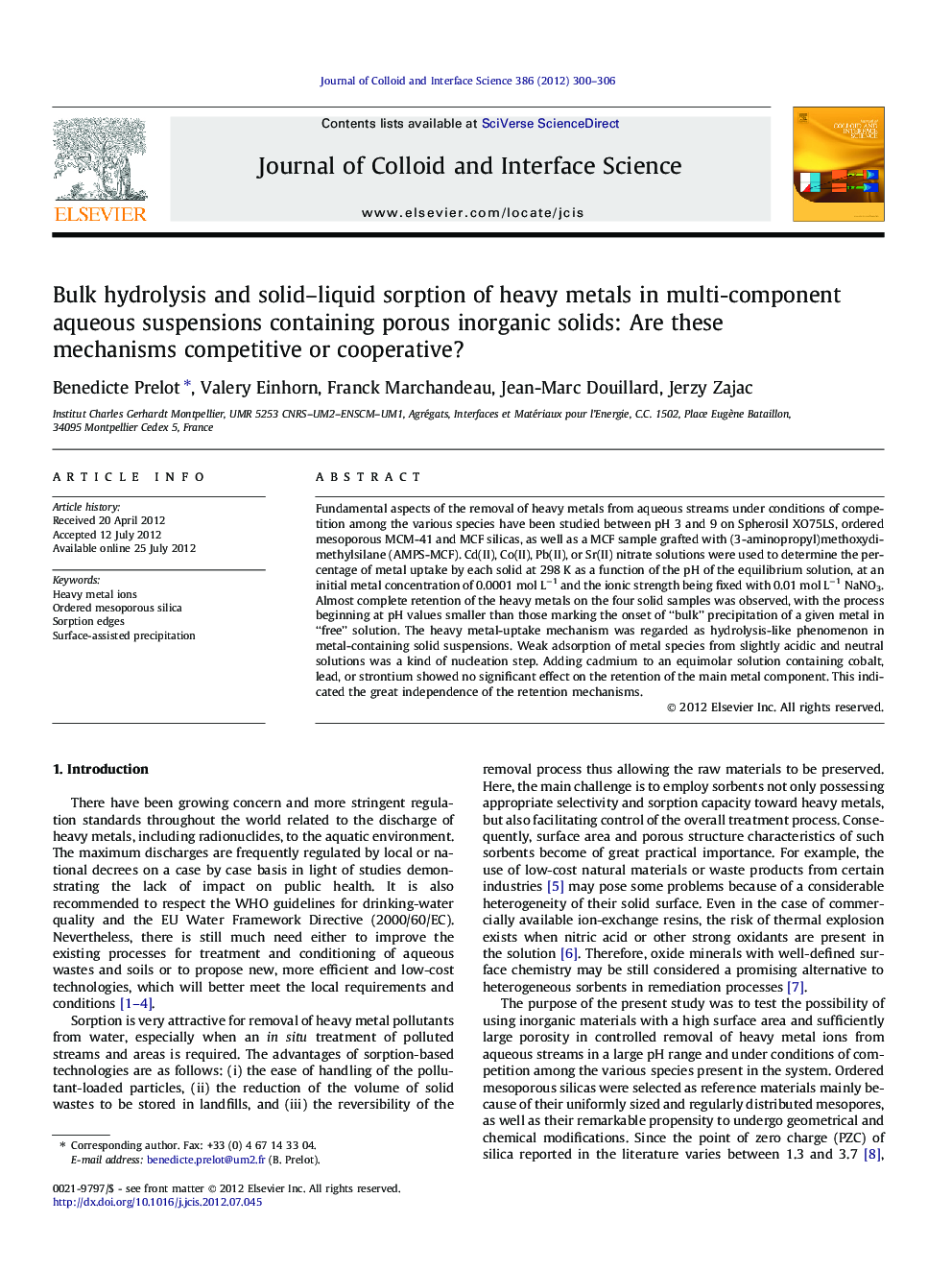| Article ID | Journal | Published Year | Pages | File Type |
|---|---|---|---|---|
| 608121 | Journal of Colloid and Interface Science | 2012 | 7 Pages |
Fundamental aspects of the removal of heavy metals from aqueous streams under conditions of competition among the various species have been studied between pH 3 and 9 on Spherosil XO75LS, ordered mesoporous MCM-41 and MCF silicas, as well as a MCF sample grafted with (3-aminopropyl)methoxydimethylsilane (AMPS-MCF). Cd(II), Co(II), Pb(II), or Sr(II) nitrate solutions were used to determine the percentage of metal uptake by each solid at 298 K as a function of the pH of the equilibrium solution, at an initial metal concentration of 0.0001 mol L−1 and the ionic strength being fixed with 0.01 mol L−1 NaNO3. Almost complete retention of the heavy metals on the four solid samples was observed, with the process beginning at pH values smaller than those marking the onset of “bulk” precipitation of a given metal in “free” solution. The heavy metal-uptake mechanism was regarded as hydrolysis-like phenomenon in metal-containing solid suspensions. Weak adsorption of metal species from slightly acidic and neutral solutions was a kind of nucleation step. Adding cadmium to an equimolar solution containing cobalt, lead, or strontium showed no significant effect on the retention of the main metal component. This indicated the great independence of the retention mechanisms.
Graphical abstractFigure optionsDownload full-size imageDownload high-quality image (129 K)Download as PowerPoint slideHighlights► Heavy metal discharges to aquatic environments. ► Inorganic supports for sorption-based environmental remediation. ► Sorbents with easily tailorable porosity and significant surface reactivity. ► Edge of sorption under conditions of competition among various ionic species. ► Metal retention mechanisms involving surface-assisted precipitation.
